The AM100 is different this year. In previous editions, while there was talk of some dramatic change or other – consolidators, disruptors, technology, Block Exemption, category killer new entrants, the digital experience, new sales channels, mobility as a service (MaaS), autonomous cars, EVs, dieselgate – the AM100 soldiered on regardless.
To some extent, this is reassuring – the industry has always been resilient, with failures fewer and farther between than in other industries.
Carmakers (or their national sales companies) have a vested interest in stability. By managing targets, bonuses, investment demands etc., the (in)famous ‘variable marketing spend’ is used to maintain market representation.
The downside of this stability is there has been little incentive to develop the business model and move away from a ‘supply push’ system to one that makes better commercial sense in the long term.
Fiscal year 2017 could be the year that changed – because, unlike in previous years, the AM100 has not soldiered on regardless.
Many of the UK’s 100 biggest motor retailers have contracted, with a quarter showing decreased turnover. More significantly, profitability has declined for two thirds of these businesses.
Why have dealers had more difficulty in selling new cars at a profit this year?
For starters, their over-reliance on new cars, a rather fickle segment (where many of the levers are in the hands of others) does not bode well. A number of businesses in their strategic reviews (the mandatory commentary in their statutory accounts) noted that the decline of the new car market was the root cause of their reduced turnover and profitability.
However, when comparing similar businesses, even those operating the same franchise, it is clear that the variations are not simply market-driven. Some businesses have started (or continued) to diversify and some have not.
There are two obvious areas into which dealers can diversify – used cars and aftersales.
The most prominent and largest example of such diversification is Sytner. The group’s rise to the top of the AM100, overtaking Pendragon in the process, was down to Sytner’s acquisition of two substantial used car operations, CarShop and The Car People. Its used car division alone would now rank in the top 30 of the AM100.
But Pendragon, too, has been focusing on used cars for a number of years and a number of groups have recognised this as the required direction of travel.
Others have been developing a ‘one-stop shop’ approach. One of the long-term success stories of this strategy is CEM Day. The Welsh group offers whatever form of transport a motorist needs – ownership, short-term rental, long-term rental, and an appropriate finance mechanism – and generates more than 3% RoS consistently (3.4% this year) as a result.
To some extent, CEM Day is operating a similar model to Arnold Clark. The Scottish group, too, offers finance, contract hire, bodyshops, used car supermarkets, new car sales, as well as being the source of some of its own used cars. And it is no slouch in the RoS stakes, at 2.7%, while topping the profit before tax (PBT) table on £106 million.
The key to profitable growth is customer retention. You will retain customers if you provide them with choice – in the range, price, style and mechanism for their car acquisition – and in the cost flexibility and reliability of their maintenance experience. And, of course, if you do it all nicely.
It is difficult to understand why dealer groups have left it so late to address the twin opportunities of used cars and aftersales.
Is it too late? The tables make depressing reading. Total PBT among the top 20 groups (ranked by PBT £’000s) is £100m lower than the previous year.
Among the top 20 groups by turnover, total profit is down on the previous year by £130m and has fallen below the 2014 figure.
Across the entire AM100, the year-on-year fall in PBT exceeds £250m. That is a substantial amount of money that is not available for investment; not available to reward staff, and owners; not available for expansion war chests.
The return-on-sales (RoS%) table adds to the depressing story. While many of the names remain the same, the best result (CEM Day) is 3.4% vs 3.9% (Hatfields) for the previous year. The entry point for the top 20 in terms of RoS has declined from 1.9% to 1.4%.
However, all is not doom and gloom – a select few have increased PBT by more than £1m (see table below).
| Group name | Increase in profit before tax (PBT) 2017 £'000 | Return on sales 2017 | Return on sales 2016 |
|---|---|---|---|
| Marshall Motor Group | 4,621 | 1.30% | 1.30% |
| JCT600 | 3,470 | 1.40% | 1.10% |
| Hendy Group | 3,152 | 1.10% | 0.80% |
| HR Owen | 3,034 | 1.40% | 0.70% |
| Allen Ford (Supergroup) | 2,124 | 2.40% | 2.30% |
| Motorline | 2,050 | 0.70% | 0.40% |
| Dick Lovett Group | 2,015 | 2.10% | 1.80% |
| Yeomans | 1,598 | 2.80% | 2.30% |
| RRG Group | 1,404 | 1.40% | 1.20% |
| TG Holdcroft | 1,107 | 0.80% | 0.60% |
Even better news, these groups all increased their RoS %. Having said that, it is by no means clear that they have changed (or needed to change) their strategies. And all but three of them fall short of the generally accepted RoS target of 2%.
Those businesses that do consistently exceed that target RoS of 2% each have their own success factors. Either brand specialisation, or geographic control, or command of process or one-stop-shop style diversity. But it is difficult to deduce a theme, except that none of them, bar Arnold Clark, are large.
It would seem that the evidence continues to point at a need to change the business model, a need that is becoming more pressing given current trends. But it also suggests there is sufficient profitability, and survivability, among the larger players to prevent a consensus forming about what really needs to be done. Or perhaps more worrying, these groups may be doing well enough that they do not even perceive there is a need to reach a consensus at all.
Is this a failure of vision? Or is there another reason? One subject that has received more attention in recent times is the type and quality of management available within the industry and also the capacity of the industry to attract new and high-quality management from outside (Read Piers Trenear-Thomas's column on the problems with motor retail management here).
In an attempt to stem their declining profitability, some of the larger groups have been trying to limit the cost of staff by centralising various functions, by reducing headcount, or by outsourcing. However, no consistent theme emerges from the numbers.
The average cost of staff varies from a minimum of about £20,000 to a maximum of over £45,000.
The most profitable groups do not have the cheapest average cost of staff. But the best five groups for RoS span the range from lowest average cost to highest.
The most profitable groups do not deliver the most cars per staff member. Again, the best five span the range.
The most profitable groups do not turn their working capital the fastest. Once more, the best five span the range.
This may seem surprising. Surely there must be something approaching a ‘one best way’, albeit with variations. Otherwise why would people be looking for ‘best practice’ to share? Surely all those smart consultants must have some answers and some customers who follow them to a visible advantage. Otherwise why would they still be in business?
Maybe the answer is that there is an overriding nullifying force that prevents progress. There have been some analysts with expertise in other industries who have concluded the same, on the basis that regardless of the common factors between industries, car retailing has major differences.
In particular, attempts at changing the system continually fall foul of the need to ‘chase the month’ and deliver short-term targets at (almost) any cost. Experiments in hiring managers who can deliver change founder in the confusion of oscillating priorities – one thing at the beginning of the month and another at the end.
However, the segment that is least exposed to these conflicting and changing priorities is used cars. And to a lesser extent (N.B. parts bonuses) aftersales.
Maybe as the emphasis shifts from new to used, the opportunity to move the management model will increase. However, it does seem that there is a long way to go.
A few simple questions may illustrate this. Research shows there is substantial demand for a reliable, while-you-wait service. ‘Reliable’ meaning appointment time guaranteed; exit time guaranteed and duration short – say half an hour.
How many groups offer (or are capable of offering) such a thing? How many groups still struggle with parking – while service cars hang around all day to be worked on for an hour or so? How many groups know exactly how long each used car has been on site without being prepped? How many set and keep to a target of say, maximum 48 hrs? How many groups know how much working capital is tied up in cars not yet available for sale? How many managers are confident (and rightly confident) that how
they think processes are operating is in fact how they are operating in practice?
Perhaps more importantly, how many actually visit the places where the processes happen in order to find out?
Observation over a number of years and a fairly large sample of the industry tells me – not many. And these are pretty straightforward questions.
Will 2018 be any different? The financial results may well be similarly alarming. New car supply has been affected by WLTP and the simple commercial impact of
uncertainty over Brexit is still with us. Those groups who have started to change direction into used cars and to have more focus on aftersales have only really just started.
However, this industry is rightly known for resilience, drive and persistence. There may be hope yet.
The autumn update is based on statutory accounts for the immediately preceding year, therefore business sold after the end of the year will still figure in the tables. Any analysis of statutory accounts for a given year would be unrepresentative if businesses sold after that year ended were excluded.


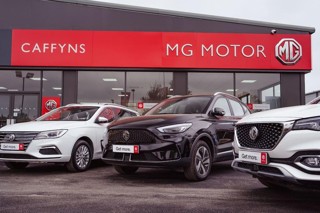
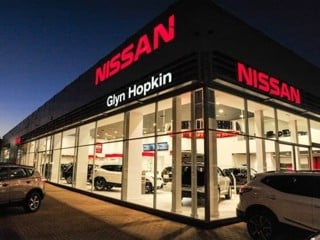
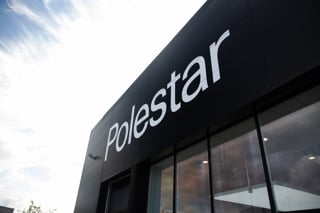
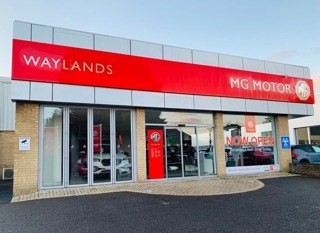
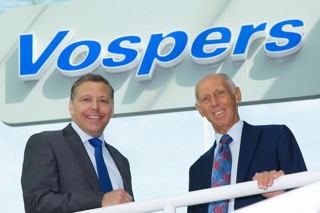












Login to comment
Comments
No comments have been made yet.